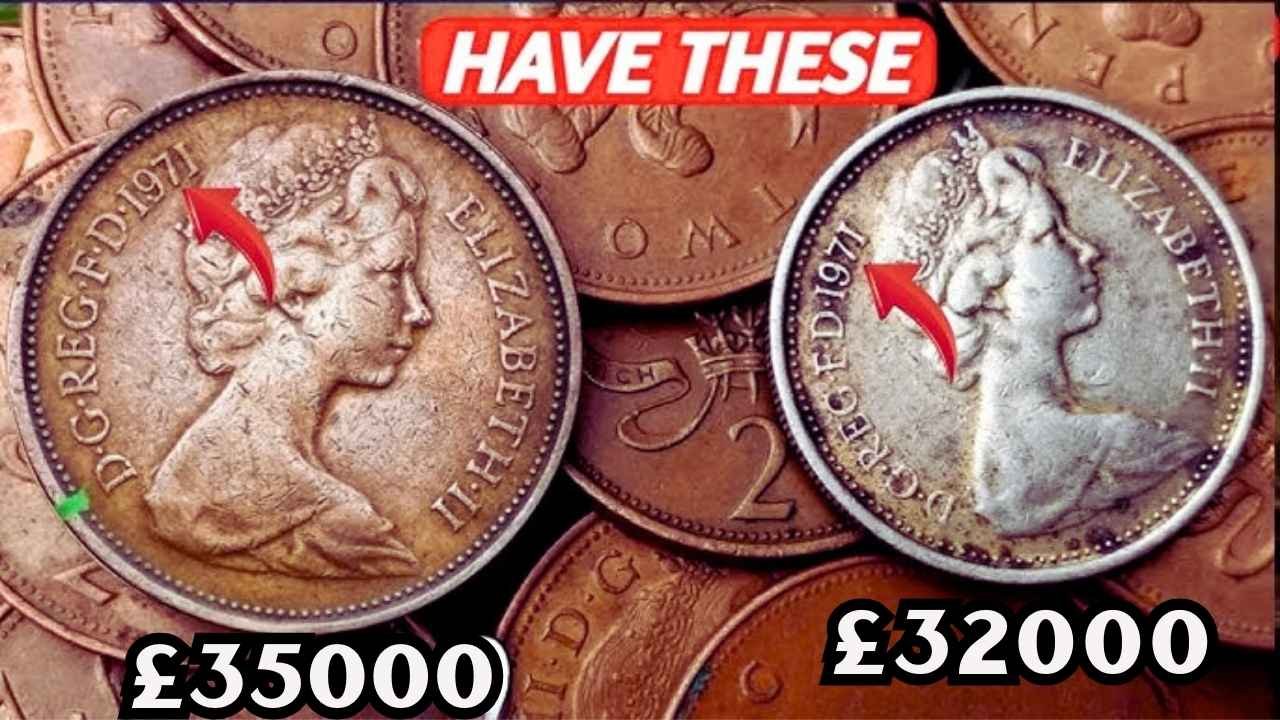The Story Behind the 1971 New Pence Coin
Back in 1971, Britain switched to decimal money, and the 2 new pence coin was born with Queen Elizabeth II on one side and a feather design on the other. Many folks think this coin has an error because it says “new pence” instead of “two pence,” but that’s not quite right. All the coins from that year were made that way on purpose, as part of the new system. Over a billion were minted, so most are worth just their face value of 2p today. Yet, some clean ones in top condition can fetch a bit more from collectors, maybe up to £5 or so, if they spot something special like a mint mark or odd shine. Videos and online chats often hype it up as a rare find, but experts say it’s more about the hype than real scarcity. Still, it’s a fun piece of history to look out for in your loose change.
Why People Get Excited About It
The mix-up comes from later years, when coins changed to say “two pence” in 1982. A real error happened in 1983, when a few slipped out with the old “new pence” words by mistake, and those can sell for hundreds of pounds. For the 1971 version, the buzz started from social media and auction sites where sellers call it an “error” to draw eyes. Places like eBay list them with high hopes, but buyers should check facts first. If you have one, look at the date and condition. A shiny, uncirculated 1971 coin might bring in £1 to £2 at a fair, while worn ones are just everyday money. It’s a reminder that not all old coins are gold mines, but hunting them can be a thrill.
Top Rare UK Coins to Watch in 2025
Now, if you’re keen to find coins that really could make you rich, turn your eyes to these standouts. The Kew Gardens 50p from 2009 is still a top pick, with only 210,000 made, and it often sells for over £100 in good shape. Then there’s the new kid on the block: the 2025 Bee £1 coin. Just 170,000 will hit pockets soon, making it rarer than many others, and collectors are already buzzing about it fetching big sums down the line. Other gems include the 1933 penny, so scarce that one went for millions at auction, or the Edward VIII patterns that never saw the light of day properly. These aren’t hiding in your jar; they’re for serious hunters at sales or online.
How to Spot and Value Them
To get started, check your change for low mintage numbers or odd designs. Use a magnifying glass to see dates and edges clearly. Apps and books can help value them, but always get a pro opinion for big finds. In 2025, with prices rising, even common rarities like the Olympic 50p series can add up if you collect a set. Remember, condition is key: a scratched coin loses half its worth. Join clubs or forums to learn more, and avoid scams where fakes look too good to be true.
| Coin Name | Year | Mintage | Average Value |
|---|---|---|---|
| Kew Gardens 50p | 2009 | 210,000 | £100+ |
| Bee £1 | 2025 | 170,000 | £50+ (expected) |
| 1983 New Pence 2p (true error) | 1983 | Unknown low | £600+ |
| 1933 Penny | 1933 | 7 | £100,000+ |
Tips for New Collectors
Start small by sorting your spare coins at home. Look for Queen Elizabeth II pieces from key years, as her long reign means lots of variety. Sell on trusted sites or at fairs, and keep records of what you find. With patience, you might stumble on a winner that pays for a nice holiday. The joy is in the search, not just the cash.
Why Coin Hunting is Booming Now
In tough times, people love the idea of free money from forgotten pockets. Shows and TikTok clips fuel the fire, showing off big wins. But stay grounded: most coins are common. Focus on fun, learn the history, and who knows? That 1971 new pence might spark a hobby that leads to real treasures. Happy hunting!
